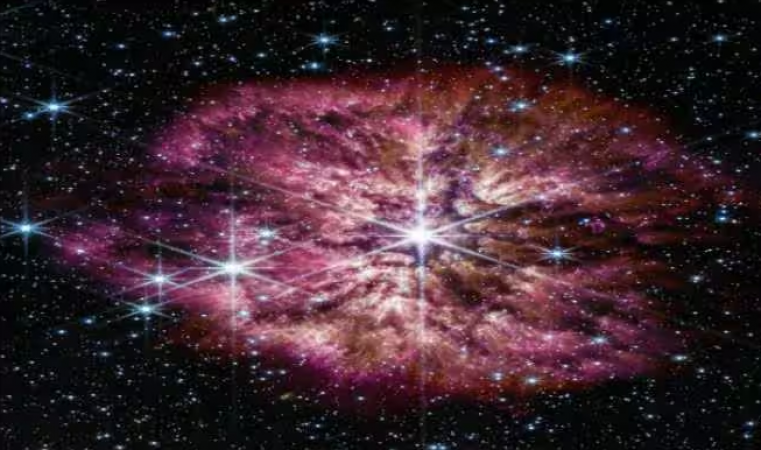
New Delhi: The National Aeronautics Space Administration (NASA), which consistently satisfies the curiosity of its followers by posting images and videos of celestial bodies and cosmic phenomena on its social media platforms, never ceases to astound its astronomy and stargazing enthusiasts.
The captivating image of a "cosmic superbloom" was shared by NASA on Twitter this time. NASA wrote "A cosmic superbloom" and added a flower emoji to the hypnotic rare image of the Wolf-Rayet star, one of the most luminous, massive, and briefly detectable stars.
The "cosmic superbloom" is the most recent image captured by NASA's James Webb Space Telescope and it shows the unusual precursor to a supernova in the blooming shape of a Wolf-Rayet star, WR 124.
The star in the picture is located in the constellation Sagitta, 15,000 light-years away, according to NASA. The star is unique for astronomers because it is one of the few stars undergoing a rare, fleeting stage known as the Wolf-Rayet phase before exploding into a supernova.
The WR 124 is 30 times as massive as the Sun and has shed 10 Suns' worth of material, which are both interesting facts about it.
Also Read: Researchers might just have discovered the secret of how smell sense works
The characteristic halos of gas and dust that surround Wolf-Rayet stars are the result of the stars' ongoing process of shedding their outer layers. With a mass 30 times greater than that of the Sun, WR 124 has shed material equivalent to 10 Suns.
The cosmic dust forms and glows in the infrared light, which Webb can detect as the ejected gas moves away from the star and cools.
Also Read: Elon Musk recently shared a new batch of Twitter updates
Astronomers claim that there is more dust in the universe than what can be explained by the current theories of dust formation. The idea that the universe currently has a "dust budget surplus" could be better understood as a result of observations made by the Webb telescope. Furthermore, Webb is best suited to observe infrared light, which is the best wavelength range to observe cosmic dust.